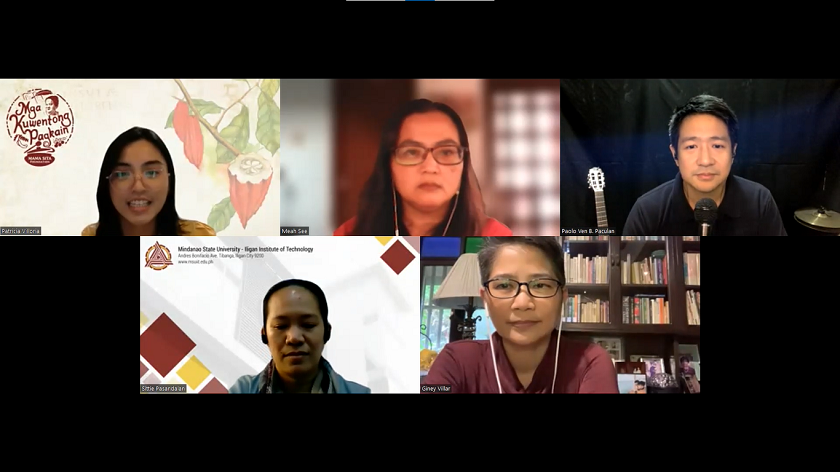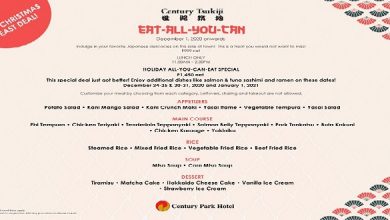
The Mama Sita Foundation, in partnership with the Universidad de Dagupan’s School of International Hospitality Management, completed its 3-day webinar series from February 22-24, 2022. With the focus of the series on the indigenous origins of Filipino food, participants were able gleam into the first recorded exchanges of food with the Europeans, as well as learn about how our neighbor’s tastes and ingredients influenced the dishes we know today.
Hosted by GRID Lifestyle and Culture writer Patricia Villoria, the session’s first day was highlighted by the different accounts of European travelers and their interactions with indigenous Filipinos. Food historian Felice Sta. Maria’s Pigafetta’s Picnic video described how native Filipinos offered food and drinks to the famished sailors. Director for the Center of Philippine Studies at the University of Hawaiʻi at Mānoa Dr. Pia Arboleda brought her point that adobo, despite having a name of Spanish origin, is inherently Filipino. With our use of vinegars as a method to preserve meat, indigenous Filipinos have been able to extend the life of their food, long before the adobo we now know in its current form.

Day 2 introduced the many influences of our neighbors to staple Filipino food. Consultant and Writer for the Mama Sita Foundation Paolo Paculan introduced the parallels of different Filipino dishes, like bibingka, puto, and palitaw with our Vietnamese, Malaysian, and Korean cultures.
Meranäw Culture advocate Sittie Pasandalan also talked about how these neighbors influenced Meranaw food that we eat today. Chinese-Filipino culture advocate Meah Ang See talked about how intertwined Chinese culture is with Filipino’s, especially when it came to food. Certified Executive Chef Giney Villar shared her knowledge of how the Spanish introduced different words, concepts, and even eating habits to Filipinos.

The last day saw different cooking demonstrations, including Chef Vicky Pacheco’s seafood sinigang, and Nina Puyat’s pancit palabok 2 ways. The Universidad de Dagupan also showcased the process of smoked bangus, and live demonstrated making gourmet smoked bangus and balonglong gourmet shells. The participants themselves talk about their takeaways from the event, and what they plan on sharing with their friends and family.

Ending on a high note, the participants of the seminar chanted, “Ipagdiriwang ko ang mga pagkaing Pilipino,” assuring everyone that to be able to share the beauty of Filipino food to the rest of the world, we must first be able to show appreciation for it, ourselves.
Felice Sta. Maria’s Pigafetta’s Philippine Picnic is now available from the National Historical Commission of the Philippine’s website and other major bookstores in the Philippines.
Nora Daza and Nina Puyat’s Let’s Cook With Nora is available in online stores and other major bookstores in the Philippines.
Interested in talking and sharing your stories on Filipino Food? Join our Mga Kuwentong Pagkain: Pinoy Food Stories Facebook Group through this link:







